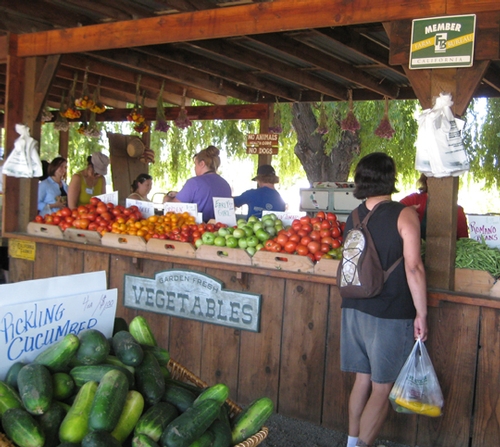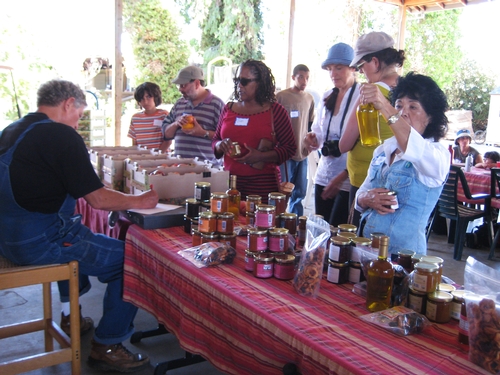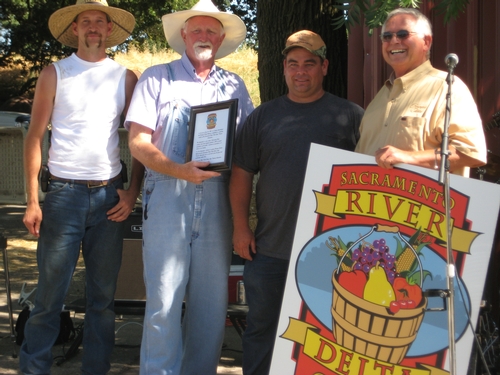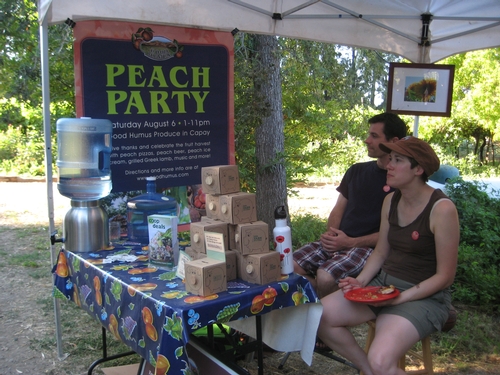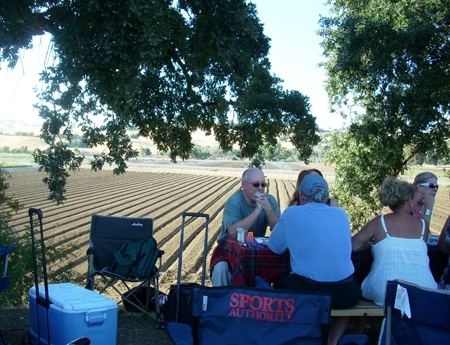The USDA Agricultural Marketing Service recently published the recipients of Farmers' Market Promotion Program 2020 grants. The UC Sustainable Agriculture Research and Education Program (UC SAREP) is excited to announce that our project proposal, Strengthening California local food networks with agritourism and direct sales, was selected for funding. UC SAREP will manage this three-year project in collaboration with a team of ANR Cooperative Extension advisors and staff working with established agricultural and agritourism associations to provide education, technical assistance, promotion and networking support for farmers and ranchers throughout California who are engaged in direct marketing and agritourism activities.
With the emergence of “shelter-in-place” directives, California's small-scale direct-marketing farms and agritourism operations faced drastic and immediate disruptions to operations causing major losses in revenue and lay-offs for staff. Particularly hard-hit were agritourism operators who had to cancel visitor- serving activities, often reducing staff or not hiring for seasonal employment. Positively, the disruptions in food supply and mobility brought the existence and importance of local farms and ranches to the attention of much of the public.
Increased awareness by the public of local farms and ranches indicates that potential for local agritourism and direct sales opportunities will increase when shelter-in-place restrictions are relaxed, offering needed options for small-scale farm and ranch diversification. Agritourism can provide farmers and ranchers with diversification options to help reduce risk, but diversifying with agritourism introduces new risks and challenges for producers that can be overcome with training, connections and resources.
The UC ANR team, working under the direction of UC SAREP Director Gail Feenstra and coordinated by UC SAREP Agritourism Coordinator Penny Leff, includes Laura Snell, County Director, UCCE Modoc County, Luis Espino, County Director, UCCE Butte County, Margaret Gullette Lloyd, Small Farms Advisor, UCCE Solano County, Karen Giovannini, UCCE Sonoma County Agruiculture Ombudsman and Laura Crothers, UC SAREP Communication Specialist. We will partner for this project with the Community Alliance with Family Farmers (CAFF) and established producer based agriculture associations Modoc Harvest, Sonoma County Farm Trails, Sierra Oro Farm Trail (Butte Co.) and Pleasants Valley Agriculture Association (Solano Co.).
Training & technical assistance
In Winter 2020-21, with travel and group gathering restrictions still in place, we will enable rapid response to COVID-19 and changing marketing conditions by California's small-scale producers through a series of webinars for farmers and ranchers adopting and adapting new and modified direct marketing and agritourism activities. The series of one-hour webinars (which will be recorded andshared for future use) will be on the topics below:
#1 Online sales options and methods
#2 Getting started with CSAs and box delivery programs
#3 Operating a safe, healthy & successful farm stand
#4 Best practices for U-Pick operations
#5 Best practices for visitor interaction with animals
#6 Best practices for farm tours, workshops and farm-based education
#7 Creative marketing and staying connected with social media
#8 Community collaboration – farm trail groups, tourism connections and other options
In project year two, with the expectation that travel restrictions will be relaxed by Fall 2021, the project will build in-depth, hands-on learning and increased collaboration by farmers and ranchers through a series of four workshops/field days in each of four California regions severely impacted by COVID-19 restrictions. The workshops will be held in Modoc, Sonoma, Solano and Butte Counties. The half-day workshops/field days, held on the farms or ranches of experienced operators of the activities being discussed, will focus on the following topics:
#1 Expanding direct-to-consumer sales through online sales/on-farm pickup, CSAs, farm direct delivery and commercial or contracted shipping
#2 Developing and marketing successful community-serving farm stands and U-Pick Operations
#3 Planning and marketing farm dinners, tours, workshops and other on-farm educational activities for the local community
#4 Community collaboration, community events and shared marketing - examples and best practices for increased connections, producer support, successful marketing and shared operations
Marketing: Connecting farms and ranches to local communities for resilient local food systems
During the project, the experienced leaders of the four partnering agricultural associations will conduct marketing campaigns promoting direct sales and agritourism activities at local farms to local communities. The campaigns will be different in each region, but will include a mix of social media marketing, print, radio and paid media advertising, signs, postcards, fliers, and creative collaborative direct sales and agritourism events or activities.
Organizing: Regional networks for ongoing support of direct sales and agritourism
The agricultural marketing association leaders will also convene and facilitate quarterly meetings of regional “Direct Sales and Agritourism Networking Groups.” Each networking group will include the partnering organizations as well as regional farmers' market associations, tourism bureaus and local farm advocates, and will regularly discuss issues, provide peer support, and work together to strengthen local food security and connect farmers and ranchers with their communities through direct sales and agritourism.
We are excited to begin this project and look forward to working with California farmers, ranchers and their communities to strengthen skills and collaboration and increase revenue to small-scale producers.
Funding for this project was made possible by the U.S. Department of Agriculture's (USDA) Agricultural Marketing Service through grant #AM200100XXXXG177. Its contents are solely the responsibility of the authors and do not necessarily represent the official views of the USDA.
Attached Images:
